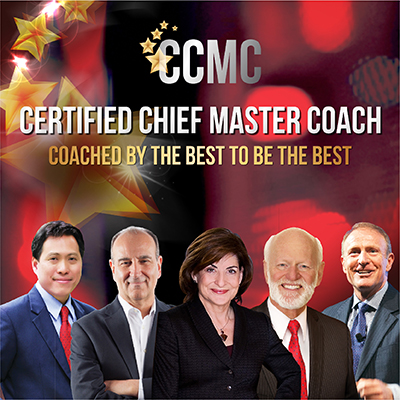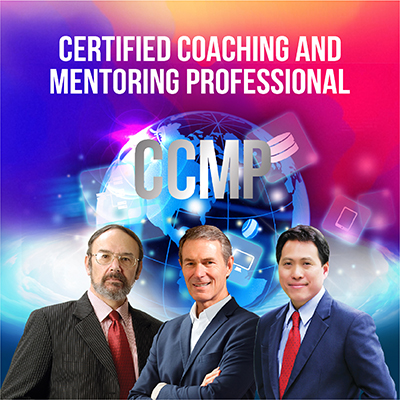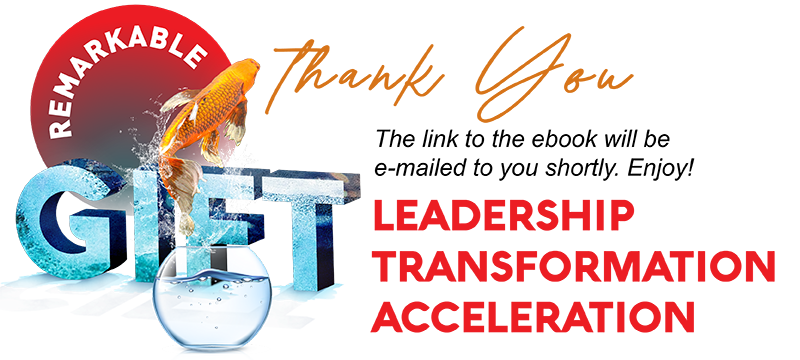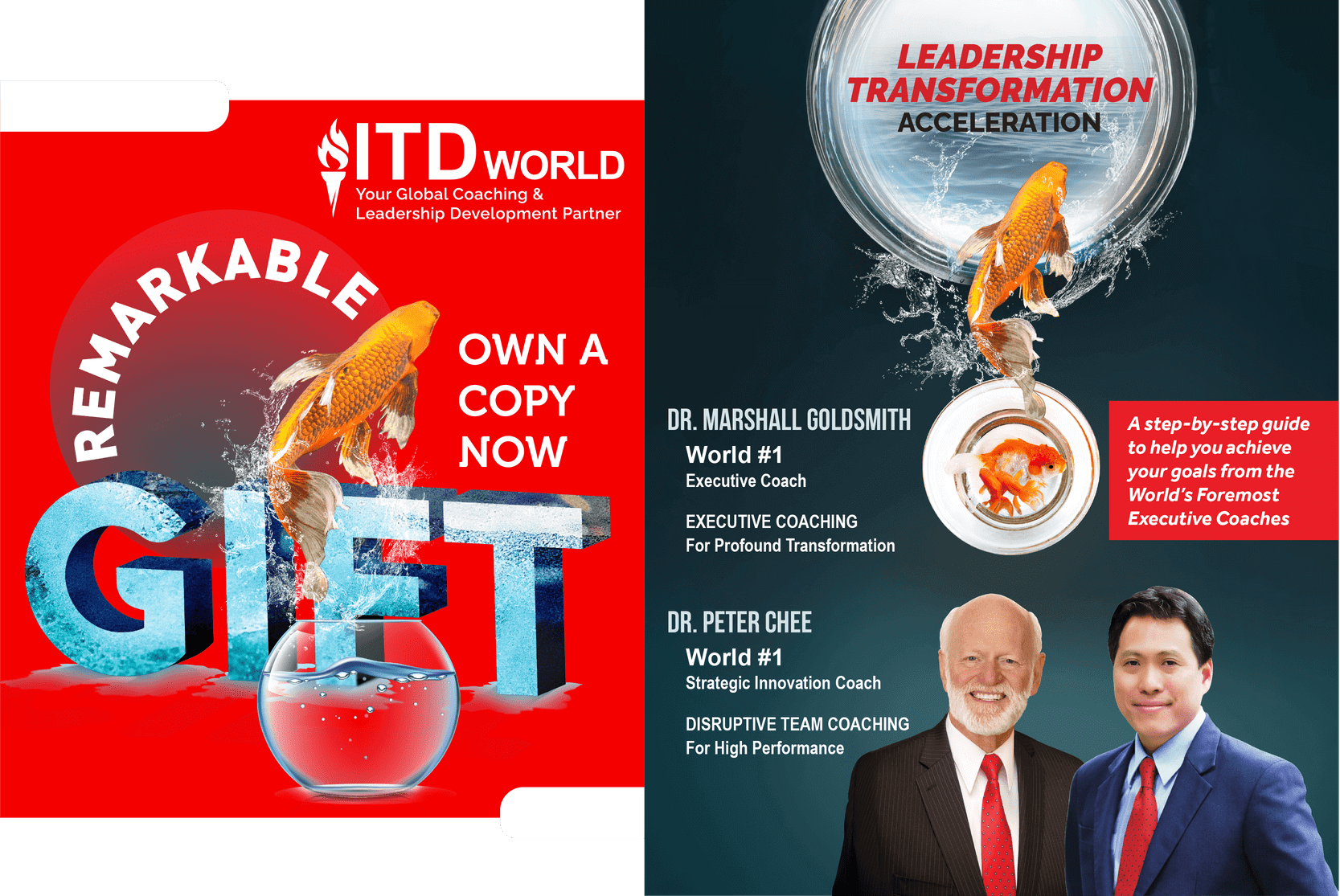Strategic Coaching for Competitive Advantage
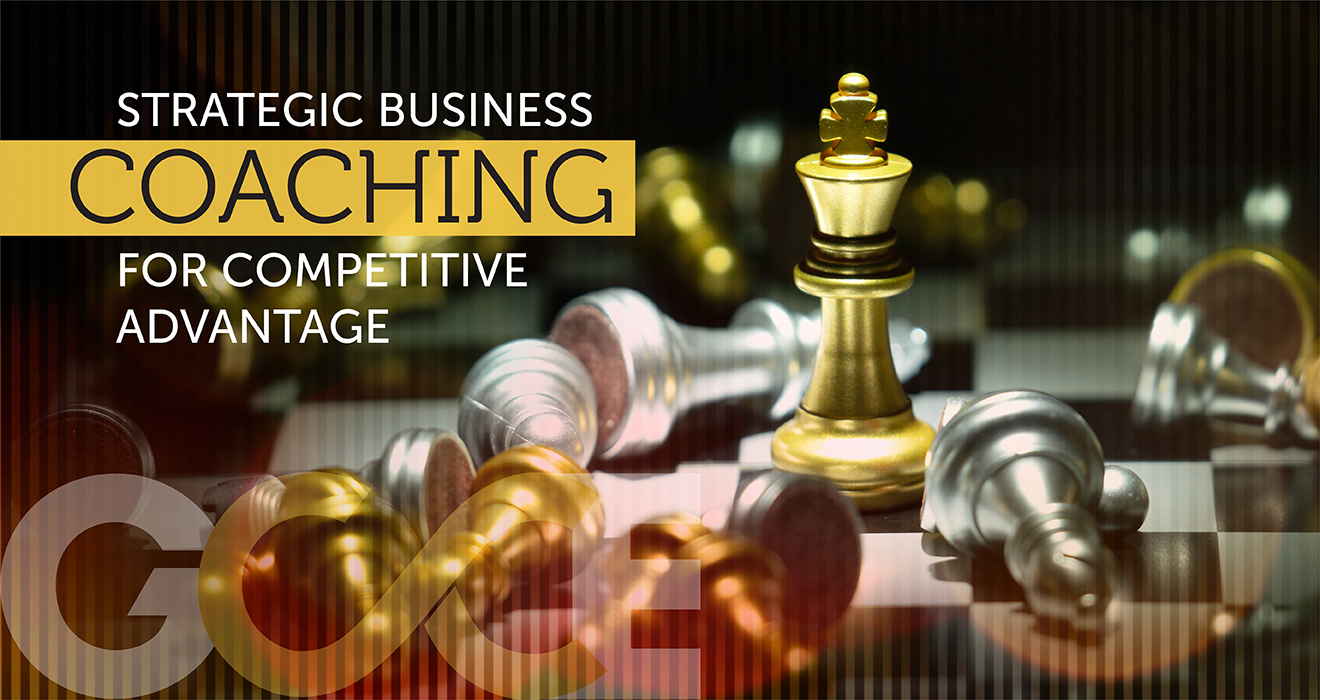

is Strategic Coaching?
Strategic coaching focuses on the various elements to realize organizational goals. Typically, these goals are business results the company wants to meet. In strategic coaching, coaches assist leaders to create and enhance organizational mission, vision, values, goals strategies, tactics, and action plans. These are the elements to enable massive and effective execution for attainment of organizational objectives.
An important part of strategic coaching is to ensure alignment between the organization and the activities executives need to execute to produce business results. Here is a strategic coaching tool you can use to build alignment with your team.
The 8 Strategic Coaching Questions
- What is our most compelling winning breakthrough goal or vision?
- Where will be play to win? (Your target customer segment)
- How will we win in your chosen playing field?
- How will we win with a disruptive game changer?
- What will we do to win with our strengths and core values?
- What resources and capabilities must be in place to win?
- What systems, processes, and measurements are required to win?
- How will we execute to win with a high performance team?
After answering the questions, be sure to pick out the action steps and assign responsibilities so people know what they should be executing to ensure results. In doing this exercise, you may also want to consider planning for contingencies and scenarios so the organization can mitigate unexpected situations.
20 Solutions Technique
If you feel stuck in coming up with solutions, try the 20 solutions technique to generate creative ideas and solutions. To begin, get several large sheets of paper and write your breakthrough goal at the top of each sheet. Start by writing and numbering all the ideas you and your team have. The objective is to get 20 or more ideas which can be worked on to accomplish the breakthrough goal.
The first five solutions may come easy and the subsequent 15 to 20 ideas may be more challenging. The key is not to give up and to view the issue from every conceivable angle. Ask yourself and your team challenging questions to trigger innovative thinking. Who knows, you may even surprise yourself by coming up with 40 great ideas!


Strategic Coaching matters?
In this video, World #1 Strategic Innovation Coach Dr Peter Chee is being interviewed on the importance of strategic coaching and how coaching at the strategic level can help drive the organization towards business results. The questions after the video are extracted from his interview to reiterate key points in coaching.
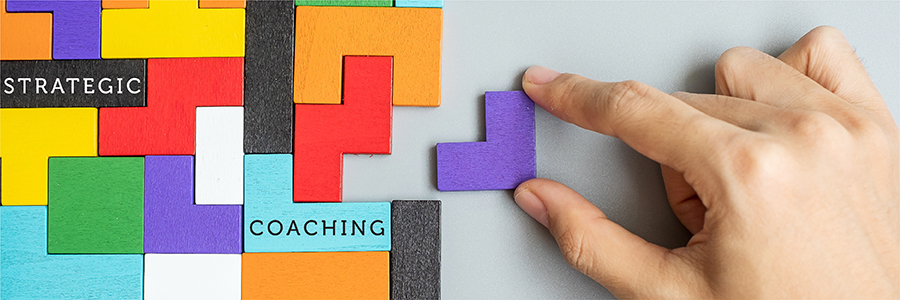

are some of the challenges faced in coaching?
The main difficulty is wrong expectations and misunderstanding of what coaching really is. What happens is some people use coaching as a way of instructing and fixing people, and it is negative. They say, “You know you got a problem, you got to change your habit, you have a performance gap, go for coaching”. People become naturally resistant to coaching in that kind of situation, no one wants to be told they are not good, they are bad and making mistakes, and they need to be fixed, no one likes that. But, if you focus on positive emotional attractors, certainly you will make them more open to coaching to see the value and benefit. Coaching is adding value to people, empowering them, unleashing their potential, helping them to achieve their dreams, who wouldn’t want that.
Peter was once asked by an executive vice president of Citibank to coach the assistant vice president. “When Susan came in, she heard her boss told me that she is a problem, she has emotional issues, people are living because of her, she needs to be fixed. When she came in she was very, very resistant, arms folded and fingers pointing at me, telling me she does not want to be coached.
“I told her I understand and that I was fully on her side. I asked her what’s her dream and the goal she wanted to achieve. She said she wanted to use her strengths, she wanted to be appreciated, she wanted to move up to be a vice president.
“I asked if she would like me to coach her on that. What do you think her answer was? Yes! She started to open up to coaching, her arms unfolded, her eyes glowed, she started to smile, talked about what she wants and how to get it, and as I begin to move her there she realized there are things she needed to improve and she became self-aware.
“I didn’t have to fix her, she was ready to fix herself. I just helped her to create awareness, set the goal, something that is compelling, she wants to go for it, after 18 months she became a much better leader, the EVP told me this was a success and was ready to promote her to VP level. But you know what, I did not tell him I did not follow his instructions to fix her. I just unleashed her potential and helped her to achieve her dream. She fixed herself, she was willing to change. Coaching helps people to be aware, and accept that they want a better future, they are compelled towards that direction and, they transform. Awareness and acceptance cultivate transformation.”
Basically, when we coach people, we build self-awareness, we lead people to self-discovery and they implement their own solutions. And they accept that this is not the way they want to be, they want a better life. If they continue on the same path, it will lead to failure and pain. If they change to a different route, they will have success, happiness and joy which is what they want. So, when they realize it, accept it, they will move on the right path.


to measure the results of coaching?
There are three main domains in one on one coaching, and you can measure the results in all three. One is performance or strategic coaching. This is coaching to achieve certain level of performance, it is definitely measurable, you set a goal and you measure. The second one is executive coaching which is about behavior change. Can you actually track and measure behavior change? You can. The third area is life coaching. Can you measure a person’s balance, fulfilment and happiness? Yes, you can do so.
Let’s go to the first one, performance or strategic coaching, it is about getting business results, or results in whatever task or job you are working on. We sit down with the coachee and set their goal. Make sure the goals are set to be SMARTEST goals. These goals are Specific, Measurable, Achievable, Relevant, Time-bound, Engaging, Satisfying and Team-based. As coaches, we believe that a goal that is well set is already fifty percent accomplished as noted by Abraham Lincoln such a long time ago. We fully believe what he stated is priceless and timeless.
When the coachee sets the right goal, it is already fifty per-cent accomplished because the other fifty percent is just doing it. The first fifty percent is about what they really want, are they fully committed to delivering it. You can see the results when goals follow the SMARTEST formula. If their goal is to double their sales you can measure the sales, if someone wants to double their cost savings, you can measure that. If someone says they are going to complete a project with an outcome in mind, you can measure it from the feedback obtained from stakeholders and evaluation scores.
The second one, executive coaching, is also measurable. You can track people’s habit and behavior by what they do and how often they do. Do they meet their commitment? If they say they want to read and have a learning habit by reading something in their area of focus and specialty for thirty minutes every day, you can track that. If they do it, after a couple of months, it is already in them, it is s part of their life and habit. You can measure that as well. Behaviors and habits can be measured.
When it comes to life it becomes a bit more subjective. We can come up with clear criteria to assess different aspects of people lives and see how happy they are in that area and measure in totality from the aspect of balance and sustainability for holistic happiness. There are again established ways to assess this. For example, we can use the 8 Elements of Life Synergy in Chapter 4: Improve Continuously to measure the gaps and satisfaction coachees have in their lives.
How does the organization benefit from holistic coaching? Coaching with strategic intent means you must see the picture holistically. Performance is not the entire picture. The whole picture comprises performance, behaviors, habits at work and the lives of employees. All these are interconnected. If you want to make it sustainable and holistic, you want your people to have happiness and balance in their life so they do not break down, burn out and are not overly stressed. You coach people so their behaviors and habits lean towards happiness, fulfilment, and the sustainability to have lifelong habits. You also coach to see that they can achieve their results and hit their KPIs. Putting all these together helps build coaching strategically in the organization. There is nothing better than top management walking the talk. The best form of leadership is leadership by example. The CEO and C-level team are great role models if they are conducting executive coaching, life coaching and strategic coaching, giving coaching, and receiving coaching. That shows the entire organization the power of coaching and everyone is encouraged to get on-board. Soon enough coaching culture emerges.
How would you define coaching in one short paragraph? Coaching is an empowering process of unleashing human potential by drawing out solu-tions from people through effective listening, asking great questions, using feedback, appreciating and continuously supporting people to take own-ership, and be accountable for taking action to realize their goals.

does the organization benefit from holistic coaching?
Coaching with strategic intent means you must see the picture holistically. Performance is not the entire picture. The whole picture comprises performance, behaviors, habits at work and the lives of employees. All these are interconnected. If you want to make it sustainable and holistic, you want your people to have happiness and balance in their life so they do not break down, burn out and are not overly stressed. You coach people so their behaviors and habits lean towards happiness, fulfilment, and the sustainability to have lifelong habits. You also coach to see that they can achieve their results and hit their KPIs. Putting all these together helps build coaching strategically in the organization.
There is nothing better than top management walking the talk. The best form of leadership is leadership by example. The CEO and C-level team are great role models if they are conducting ex-ecutive coaching, life coaching and strategic coaching, giving coaching, and receiving coaching. That shows the entire organization the power of coaching and everyone is encouraged to get on-board. Soon enough coaching culture emerges.

would you define coaching in one short paragraph ?
Coaching is an empowering process of unleashing human potential by drawing out solutions from people through effective listening, asking great questions, using feedback, appreciating and continuously supporting people to take ownership, and be accountable for taking action to realize their goals.

people and organizations embracing a coaching culture? Why?
Yes, one great example is Google which has a chief of leadership development and coaching and they created a coaching culture. They have the eight great habits of effective leaders and the number one on the list is coaching. It is an organization which has been an employer of choice, a great place to work consecutively for over 10 years. Coaching has been one of the keys to success at Google. A lot of organizations see that and are in the process of creating a coaching culture.
Coaching is growing so fast. We talk about Gen Y, Gen Z, even Gen X-ers they prefer encouragement and empowerment rather than telling. We don’t think people appreciate coming to work every day being bossed around and being told what to do. Some people, the older generation have come to accept it, but they also don’t prefer it. There is always a better way. So, if you look at Gen X, Y, Z, they dislike being bossed around. They want to be mo-tivated and inspired by their leaders.
They want their leaders to influence them, empower them, not be-ing always told what to do. If you keep on doing that then your people lose initia-tive and ownership, they will not step up, what happens is a leader doing that will not be able to engage the people well and eventually their people will not be able to lead themselves, and they cannot take on more responsibilities from the leader, and what then naturally happens is the leader gets into a trap.
It is called the crazy-busy syndrome. The leader starts to say he or she does not have time for coaching, in actual fact it is the worst excuse ever. It is not about no time, it is the lack of capability to coach, going back to bossing all the time, telling people what to do, not building up people’s capability to think and solve problems, so people always depend on the leader to solve problems and give answers.
Imagine if you are a leader and you are at home or away for holidays, your people will not take initiative, they will be waiting for you, asking you for solutions and directions, they will not move. Everything comes back to you. You get crazy-busy and you will be-come trapped in this syndrome and you won’t get out of it.
The way to get out of it is to master coaching, and then empower people, delegate the work, get out of the way and let them do the work and let them learn. It is through making mistakes that people will learn, it is through challenges that people grow more. If you ask yourself in your life, when was the time you learn the most? It is probably when you made mistakes and learn from it and took on bigger challenges. So, in coaching, we allow people to make mistakes as long as it doesn’t kill them it makes them stronger. We let them learn from it, so they keep getting better. We give them challenges because the challenge is what brings out the best in them.
Those people who are great leaders are coaches. They are more strategic, and they have free time to have really great work-life balance and are great role models. That is the benefit you get out of coaching when your people are developed and motivated to take on bigger responsibilities. You get better results, you have high trust relationships with the people you work with, you have more free time for yourself and your family and recreation for a more balanced life.

do you become a Certified Professional Coach or a Master Coach?
To become a certified professional coach, you may consider the Certified Coaching and Mentoring Professional (CCMP) program, available on full e-learning and blended learning mode. For advanced mastery of coaching, take a look at the Certified Chief Master Coach (CCMC) program

